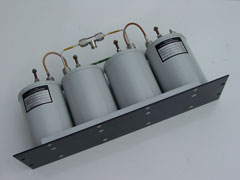
click for larger image (80KB)
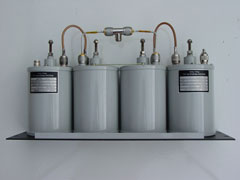
click for larger image (84KB)
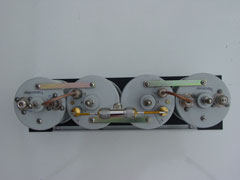
click for larger image (76KB)
 click for larger image (80KB)  click for larger image (84KB)  click for larger image (76KB) | These photos show the original configuration of the N6EX repeater duplexer. The transmit and receiver filter pairs used the original RG142 cables that came with the preselector panel. A bridle was constructed from UT141 (RG402) semi-rigid cable. This cable made the empirical derivation of the cable lengths easier than if standard flexible cable was used. |
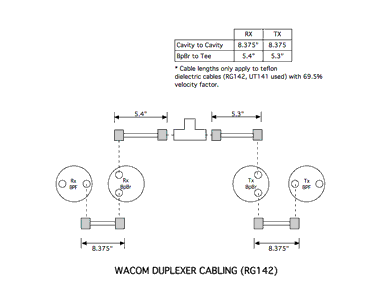 click for larger image (16KB) | The diagram to the left shows the original cable lengths used on the N6EX repeater duplexer. The diagram and included chart show the lengths between the two cavities (Bp and BpBr) on each side of the duplexer as well as lengths between the BpBr on each side and the Antenna Tee connector. The lengths are measured from the ends of the connectors.The cable between the pairs of cavities was RG142 and the cable between the cavities and the Tee was UT141. RG142 could be used in place of the UT141. The cable length should be same since both use teflon dielectric. |
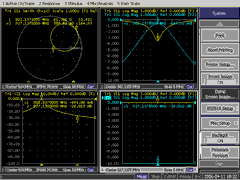 click for larger image (24KB) | Receive Pass Cavity
|
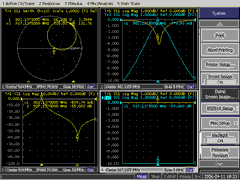 click for larger image (24KB) | Receive Pass-Reject Cavity
|
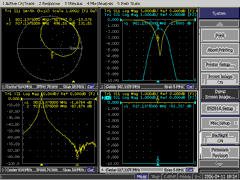 click for larger image (24KB) | Combined Receive Pass + Pass Reject Cavities
|
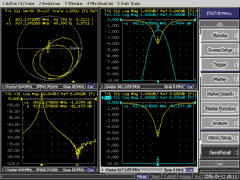 click for larger image (24KB) | Total Duplexer Receive Path (at Tee)
|
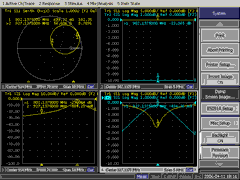 click for larger image (24KB) | Transmit Pass Cavity
|
 click for larger image (24KB) | Transmit Pass-Reject Cavity
|
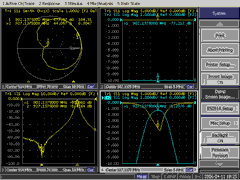 click for larger image (24KB) | Combined Transmit Pass + Pass Reject Cavities
|
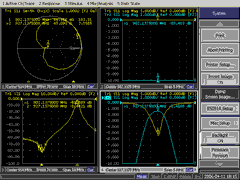 click for larger image (24KB) | Total Duplexer Transmit Path (at Tee)
|